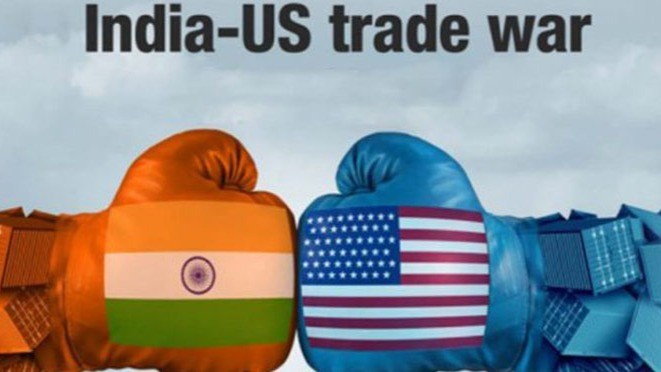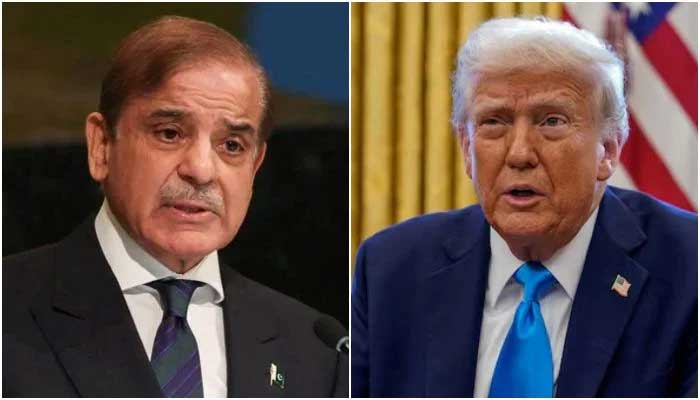The global economy has entered a turbulent phase as US India Trade Tensions Rise over Washington’s latest decision to impose a steep 50% tariff on select Indian goods. The move signals a sharp escalation in bilateral trade disputes and marks one of the most significant policy shifts in recent years. According to US officials, these tariffs are a response to India’s persistent imports of Russian oil, which Washington argues undermine Western sanctions against Moscow.
The development has raised concerns not only in political corridors but also across global markets, where investors are closely watching the ripple effects on trade, supply chains, and diplomatic ties.
Background of the Dispute
For decades, the United States and India have shared a complicated yet strategically crucial trade relationship. While the two nations have strengthened defense cooperation and digital partnerships, trade frictions have often resurfaced. From disagreements over agricultural subsidies to disputes on technology and pharmaceutical exports, the relationship has always had fault lines.
Now, as US India Trade Tensions Rise, Washington has taken a firm stand. Officials argue that India’s continued reliance on discounted Russian crude oil challenges the global sanctions regime put in place after the Ukraine conflict. The Biden administration believes that punitive measures are necessary to discourage what it sees as indirect support for Russia’s economy.
Details of the Tariff Decision
The newly announced tariffs affect a wide range of Indian goods, particularly textiles, chemicals, and select steel exports. Washington claims these sectors benefit unfairly while India enjoys access to discounted Russian energy, giving it a competitive market edge.
Indian exporters, however, view the measure as disproportionate and damaging to bilateral trade worth over $190 billion annually. Industry experts fear the tariffs could trigger retaliatory measures from New Delhi, putting more sectors at risk.
Reactions from India
The Indian government expressed disappointment over the decision, labeling it “unilateral and protectionist.” Officials in New Delhi emphasized that India’s imports from Russia are guided by national energy security needs rather than geopolitical alignments.
Trade associations in Mumbai and Delhi have already urged the government to pursue diplomatic channels to resolve the issue before it spirals further. Analysts believe India could explore tariff hikes on American agricultural products, high end electronics, or even aerospace supplies if negotiations fail.
Global Supply Chain Concerns
Economists warn that as US India Trade Tensions Rise, the global supply chain may suffer collateral damage. India is a major supplier of pharmaceuticals, textiles, and IT services, while the US remains one of the largest markets for such sectors. Additional cross border costs, delays, and shifting trade policies may raise prices for consumers worldwide.
Markets in Europe and Asia are also closely monitoring the tussle, as multinational companies rely heavily on India and the United States for outsourcing and raw materials. With inflationary pressures already weighing on global economies, another disruption could push recovery efforts backward.
Expert Opinions
Trade analysts suggest that Washington’s move could have long-term strategic implications. While the US is keen to counter Russia’s resource driven influence, pressuring India may push New Delhi closer to other economic blocks such as BRICS or even deepen its ties with Russia and China.
Dr. Sameer Verma, a trade relations expert, notes:
“Each time US India Trade Tensions Rise, it challenges the notion of strategic partnership. Both states need to carefully balance national interests with global responsibilities.”
Experts also argue that the move could provide opportunities for other exporters like Vietnam, Bangladesh, and Mexico, who may benefit from the vacuum created between two of the world’s largest democracies.
Impact on Indian Domestic Economy
The timing of this policy shift has added challenges for India’s domestic market. Textile manufacturers in Gujarat, steel producers in Odisha, and chemical exporters in Maharashtra now face the burden of higher tariffs, jeopardizing thousands of jobs.
Local businesses argue that Washington’s decision unfairly penalizes Indian industries that have little direct connection to energy imports. This domestic pressure could fuel stronger political rhetoric in India, especially with elections approaching.
Diplomatic Fallout
Beyond economics, the decision is reshaping global diplomacy. As US India Trade Tensions Rise, questions are emerging about the future of the Quad alliance the strategic grouping of the US, India, Japan, and Australia aimed at countering China’s influence in the Indo-Pacific.
If trade disagreements deepen, India may adopt a more independent foreign policy stance, reducing cooperation in certain security or economic initiatives. Such a move could complicate Washington’s long-term strategy in Asia.
Possible Solutions and Negotiations
Despite the growing rift, diplomatic efforts are underway. Reports indicate backchannel talks through Washington and New Delhi embassies, with trade ministers expected to meet soon. Both sides acknowledge the risks of escalation, and there remains room for compromise.
Some possible middle ground measures include:
-
Limited exemptions for specific Indian industries.
-
A phased tariff rollback in exchange for controlled reductions in Russian imports.
-
Strengthening bilateral investment in technology and renewable energy as compensation.
If successful, these negotiations could stabilize markets and rebuild confidence in one of the world’s most vital trade partnerships.
The Road Ahead
Looking forward, much depends on whether both nations can iron out differences. Neither Washington nor New Delhi can afford prolonged hostilities, given global economic uncertainty. As analysts point out, unresolved disputes might invite competitors into critical sectors, eroding hard earned market shares.
In the meantime, businesses, policymakers, and international allies will continue watching closely. The ultimate test will be whether this crisis leads to collaboration or further estrangement.
Conclusion
The 50% tariff decision highlights a defining moment in bilateral relations. While intended as a warning shot over Russian oil imports, it has ignited debates on sovereignty, market competition, and global economic stability.
As US India Trade Tensions Rise, the world is reminded that international trade is rarely just about markets — it is about politics, alliances, and the evolving balance of power.

















